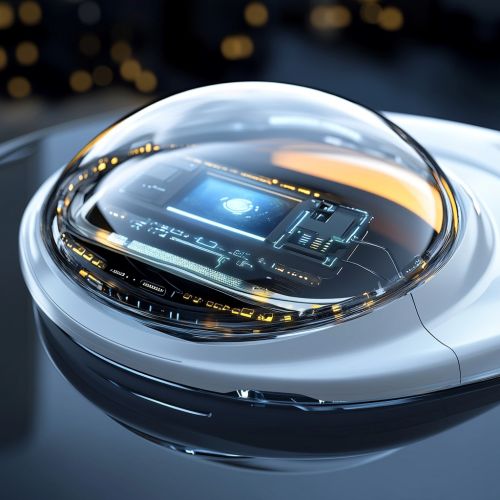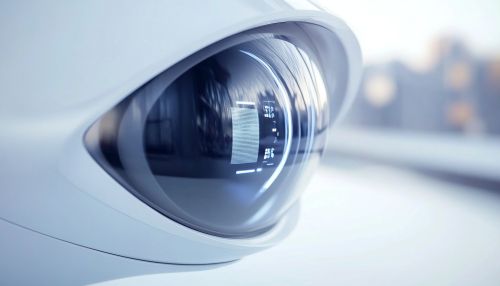@future of smart contact lens technology
Introduction
The future of smart contact lens technology is poised to revolutionize the way we interact with the world. These advanced devices, which integrate augmented reality (AR) and various biometric sensors, offer a glimpse into a future where digital information seamlessly overlays our physical environment. As research and development in this field progress, smart contact lenses are expected to transform sectors such as healthcare, entertainment, and personal computing.
Technological Foundations
Smart contact lenses are built upon several key technological advancements. The integration of microelectronics into flexible, biocompatible materials is crucial for their development. These lenses incorporate miniature circuits, sensors, and wireless communication modules, all of which must be compact and energy-efficient to fit within the confines of a contact lens.
Display Technologies
One of the primary functions of smart contact lenses is to provide visual information directly to the user's eye. This is achieved through advanced display technologies, such as microLEDs and OLEDs. These displays are designed to project images and data onto the retina without obstructing natural vision. The challenge lies in creating displays that are both high-resolution and power-efficient.
Power Sources
Powering smart contact lenses is a significant challenge due to the limited space available for batteries. Researchers are exploring various solutions, including energy harvesting from ambient light or body heat, and the development of ultra-thin, flexible batteries. Wireless power transfer is another area of interest, allowing lenses to be charged without direct contact.
Sensor Integration
Smart contact lenses can be equipped with a variety of sensors to monitor health metrics and environmental conditions. These may include glucose sensors for diabetic patients, electrooculography sensors for tracking eye movements, and environmental sensors for detecting pollutants or allergens. The integration of these sensors requires careful consideration of power consumption and data processing capabilities.


Applications
The potential applications of smart contact lenses are vast and varied, spanning multiple industries and use cases.
Healthcare
In healthcare, smart contact lenses offer promising applications for continuous health monitoring. For instance, lenses equipped with glucose sensors can provide real-time blood sugar readings for diabetic patients, reducing the need for invasive blood tests. Additionally, lenses with intraocular pressure sensors can aid in the management of glaucoma, providing early warnings of pressure changes that could lead to vision loss.
Augmented Reality
Smart contact lenses are expected to play a significant role in the evolution of augmented reality. By overlaying digital information onto the physical world, these lenses can enhance navigation, provide real-time translations, and offer contextual information about objects and locations. This capability has the potential to transform fields such as education, tourism, and professional training.
Personal Computing
The integration of smart contact lenses into personal computing represents a shift towards more immersive and unobtrusive interfaces. Users could interact with digital content through eye movements and gestures, eliminating the need for traditional input devices. This could lead to new forms of human-computer interaction and open up possibilities for hands-free computing.
Challenges and Considerations
Despite their potential, smart contact lenses face several challenges that must be addressed before widespread adoption can occur.
Technical Challenges
The miniaturization of components, power management, and data processing are significant technical hurdles. Ensuring that lenses are comfortable and safe for prolonged wear is also critical. Researchers must balance the need for advanced functionality with the limitations imposed by the small form factor of contact lenses.
Privacy and Security
The use of smart contact lenses raises important privacy and security concerns. The ability to capture and transmit data about the user's environment and health metrics necessitates robust security measures to protect sensitive information. Ensuring user consent and control over data collection and sharing is paramount.
Regulatory and Ethical Issues
The development and deployment of smart contact lenses must navigate complex regulatory landscapes. Ensuring compliance with medical device regulations and addressing ethical concerns related to surveillance and data privacy are essential for gaining public trust and acceptance.
Future Directions
The future of smart contact lens technology is likely to be shaped by ongoing advancements in materials science, electronics, and artificial intelligence. Researchers are exploring the use of graphene and other novel materials to enhance the performance and durability of lenses. Additionally, the integration of AI algorithms could enable more sophisticated data analysis and decision-making capabilities.
As these technologies mature, smart contact lenses have the potential to become a ubiquitous part of our daily lives, offering new ways to interact with the digital world and monitor our health. However, realizing this vision will require continued collaboration between scientists, engineers, and policymakers to address the technical, ethical, and regulatory challenges that lie ahead.
